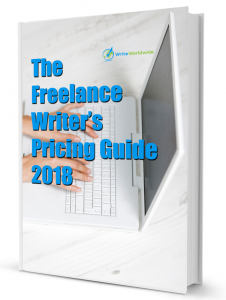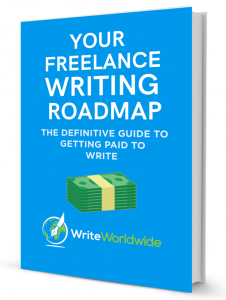You’ve checked your grammar and spelling. Now what?
It’s time to hit the publish button, right?
No, not yet.
There’s so much more to writing than grammar and spelling, especially if you’re writing for the web. Print writing is so much less fussy because it doesn’t involve meta descriptions, keywords, links and formatting for multiple platforms. But writing for the web is all these things and more.
For example, someone sent me a guest post the other day. Her grammar and spelling were amazing. BUT, the amount of work left to get her article ready for publishing on my website was more than I was looking for.
She didn’t include headers to break up the subject matter, no links, or alt-tags for her photos. I politely rejected her piece!
When you writing for the web, you must be able to tell a captivating story that keeps people reading (otherwise you end up with high bounce rates). You also need headings and subheadings for fast, skimmable reading.
And don’t forget about visual media, alt-tags, meta descriptions, and SEO. And of course, image sizing for both the web and mobile.
Whether you’re writing content for a client or yourself, making your work as publishable as possible BEFORE submission cuts down on your future workload. Otherwise, you’ll be dealing with client demands for revisions and missing out readers and search engine traffic.
That’s why I created The Writer’s Pre-Publish Checklist. Using this downloadable checklist will help you (and me) make sure you haven’t missed any of the 23 critical things your articles should ALWAYS include when writing for the web.
The Writer’s Pre-Publish Checklist
I’ve broken the checklist into four main components of an article: writing, links, photos, and SEO. Using this list can help you create a content strategy for the web before writing your piece. And by breaking the post down into bite-sized parts, you’re less like to miss things when editing.
Part 1: Content Writing

Excellent grammar and spelling are so important for content writing, but they are just part of a readable piece.
Compelling, clickable headlines invite people in to read your articles. The wrong headline means no one will ever read your correctly written piece of literature. Nor will they see your well-placed call to action!
The same goes for fluff! Fluff works well for pillows and cotton candy but not content writing. Get rid of the filler words and break up your content with headers and subheaders to make your article skimmable by those on the go.
Finally, double check that you formatting works across multiple browsers and mobile (especially on mobile since it’s now the #1 platform to design for).
And, if you’re sending your article to a client, make sure you’ve submitted your finished piece in the requested format.
10 Content Writing Components to Check
- Grammar/Spelling
- Correct H1, H2, etc.
- Bullet Points/Numbered Lists
- Removed excessive “filler” words (just, actually, although, also, etc.)
- Killer headline with keywords
- Formatting is correct
- Call-to-action (CTA) is clear
- Preview popular browser and mobile views
- Writing broken up into readable paragraphs complete with subheaders
- Using correct Doc. format for submission (Word, Google Doc, etc.)
Part 2: Links

The second component of The Writer’s Pre-Publish Checklist is linking. Correct link building is essential when writing for the web because it increases the content longevity.
Always include high-quality links that add value and more information to your article. Your links should also always contain content that pertains to the content of your article. Finally, make sure your content writing includes a mix of both internal and external links.
Internal links offer your readers a roadmap to other informative articles on your site, while external links provide value from other locations and writers.
And, when writing online, ALWAYS make sure you use “no-follow” links for affiliate or paid links and disclose them with a legal disclaimer. Otherwise, you could find yourself in hot water with the search engines or the governments of some countries (the U.S. being one of those)!
4 Link Components to Check
- Internal links Included
- External links Included
- Used no-follow links for affiliate or paid links
- Included disclaimer for affiliate or paid links
Part 3: Photos

Today, high-quality photos and video are a must when writing online. In fact, they are almost more important than writing, which is why they make up component #3 on the list. But they must also be optimized for the web, as well.
You can use photo editing software and apps such as Photoshop, Fotor, Snapseed, GIMP, PicMoneky, or Pixlr. Or try online photo resizing tools, such as ImagineResize.Org, or online photo optimizing tools, like Optimizilla.
The hardest part about optimizing photos for your articles is keeping the crispness of high-resolution photos while reducing them small enough for faster page loading times.
When resizing, adjust your photo size to 1200 pixels or smaller and keep the photo resolution between 72 and 90 dpi for best load results. Finally, don’t forget to include your alt-tags and meta descriptions/keywords for all your photos so the search engines can find them.
For video, consider hosting it on sites like Youtube and linking or embedding them in your online content instead of uploading to your own site. Once again, keep the size and resolution down to increase loading time.
5 Photos Components to Check
- Featured Image Included
- Photos placement is correct within the article
- Photo captions grammar and spellchecked
- Alt-tags and description/keywords included with each image
- Images optimized and sized for web/mobile
Part 4: SEO

Finally, the fourth component of high-quality content writing is your SEO. Excellent search engine optimization is vital for the search engines as well as your readers. Without proper SEO, people will never find you – unless they happen to be already following you.
Tags, keywords, and categories are the words and phrases that people use to find what they’re looking for. Your content writing should always include relevant ones, located in your headline, headers, text, photos, and meta descriptions. Just don’t overdo it or your article will come out stilted sounding!
And never forget to include a meta description for your article.The meta description is the small summary that shows up under your headline in search results and entices people to read your article.
5 SEO Components to Check
- Set tags/keywords
- Selected categories
- Meta-description for article
- Is the slug correct?
I have two final tips for improving your content writing before you hit publish.
The first, try writing your articles one day and editing on another. Seeing mistakes is so much easier when you look at your piece with a fresh eye.
Or, have someone else, such as an editor, take a look for you. It’s also helpful for non-native English speakers to have a native speaker look over your work before publishing.
Finally, once you’re done with the editing, use The Writer’s Pre-Publish Checklist to make sure you haven’t missed any of the 23 necessary article components before hitting the publish button. Download your FREE copy below.

Heidi Medina is a pro blog + influence outreach strategist. Find Heidi on FlyAwayU.com; follow on Facebook and Instagram.




Brilliant. Spot on checklist and article. Thanks, Heidi. “Print writing is so much less fussy…” Indeed. I am still learning about no-follow links and alt-tags for photos. Seems like there’s always something! Thanks for pulling this all together here 😉
Hi Kate,
A great article indeed. Thanks for the comment.
Cheers,
Nick
Hi Kate,
Yep, it seems like there’s always something new going on that we need to stay on top of when it comes to writing for the web. Thanks for the read!
Great tips! I find all the SEO and “rules” for gaining an audience blogging to be extremely overwhelming! I love how you broke each piece down in this article. Thank you.
Hi Robin,
Yes it can be overwhelming. The key is always to write for your audience first, but it does help to make sure search engines find it too. It’s important to strike a balance.
Cheers,
Nick
It can be overwhelming Robin, especially when you’re just getting started and they keep changing things. As Nick says, write first for your audience and then worry about the SEO. With a little practice, you’ll soon be a pro!
Great! This is all I needed to get things started. Being a newbie (yet to get my first client) the checklist literally revived my hope of being a great writer. It is a new tip to up anyone’s game. Thank you.
Hi Francis,
I’m really glad you found it useful. Browse the blog and I’m sure you’ll find a ton of other useful information.
Keep well,
Cheers,
Thanks for Post!
Headlines are one of the most important parts of your content. Without a compelling headline, even the most comprehensive blog post will go unread. Master the art of headline writing. For example, the writers at BuzzFeed and Upworthy often write upward of twenty different headlines before finally settling on the one that will drive the most traffic, so think carefully about your headline before you hit “publish.”
You’re welcome and, yes, headlines are incredibly important in ensuring your content gets read.
Keep well,
Nick